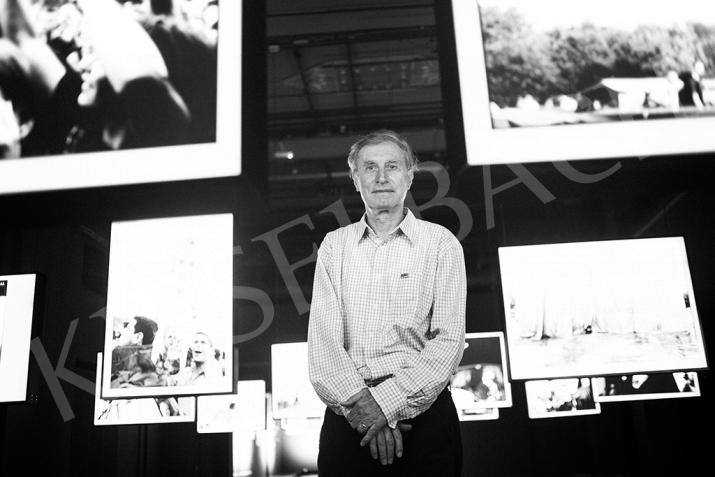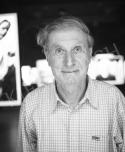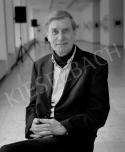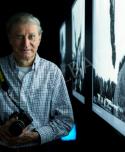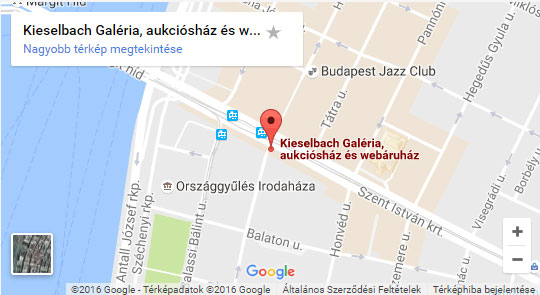Benkő Imre Budapest, Kispest, 1943.02.17.
He spent his childhood in a mining estate in Bakony. After graduating from Ajka she continued her studies in Budapest.
1963-1968: Employee of Beloiannisz Telecommunication Factory, started to take pictures here
from 1963: Member of Budapest Photo Club
1964: photo circle leadership exam
1968: won the first prize at the youth exhibition and invited to the MTI Photo Editor (Sign: BN)
1968-1986: reporter of the MTI Photo Domestic Policy Department, while he graduated from the MUOSZ Journalist School with a photojournalist. He photographed dance, ballet, culture, education, and everyday events at MTI.
1969: member of MUOSZ
1986-1990: from its establishment until its termination - photojournalist chief of Képes 7, then in 1992 of the Európa magazin
from 1988: Teacher of documentary photography at the Hungarian University of Applied Arts
He worked as a freelancer for HVG. His photos are represented by the Wostok Press Photo Agency in Paris.
1973: member of the Association of Hungarian Photographers and the Association of Hungarian Photojournalists
1977-1979: member of the Young Photography Studio
from 1987: for more than a decade, he has been photographing the demise of Ózd metallurgy. In his series of pictures not only a factory, but the total bankruptcy, disappearance of the Hungarian socialist heavy industry and the empty space left behind can be followed. He is not looking for sensations, but capturing it as a chronicler who has been crowned with kings. With his photo series, he won the scholarship of W. Eugene Smith Memorial Fund (New York) in 1992. The main area of his creative work is the multi-image report, the so-called photoessay. In his recordings, the presentation of events often serves sociographic discoveries. The characters in their pictures are, for the most part, people who have been pushed to the edge for some reason and who are depicted in a humanistic way. He is interested in the continuous visual interpretation of the real world, the specific documentary representation of man and his environment. For three decades, he photographed the man of the streets of Budapest, the urban way of life, as the French Atget photographed the streets and suburbs of Paris at the turn of the last century. He works almost exclusively with black-and-white technology, and is also engaged in panoramic photo portraits. He photographed in 28 countries, such as Afghanistan (in a Kabul prison when political prisoners were released in 1980). China, Cambodia (1983), Korean GDR, Cuba during the VIT, (1978, then 1985 and 1989), Vietnam (when the two parts united, 1976 and 1983) in the Soviet Union (Siberia) 1978, Moscow Olympics 1980, 1983, 1987), India (1980). Many of his photos have been exhibited abroad and at home, and his photographs are often seen in domestic and foreign journals.
Awards and honors: In 1975 and 1978 he won a gold medal at the World Press Photo. 1976: for Socialist Culture, 1981 Balázs Béla Prize, 1983: Alexander Rodchenko Prize at the Damascus Exhibition of Interpress 1985: Interpress Photo Moscow (Gold Medal for Vietnam Series) 1988: MUOSZ Award, Pulitzer Prize in 1991. and the Hungarian Photography Grand Prix. 2016 Excellent Artist. Member of the Hungarian Academy of Arts.
Books: Acélváros: Ózd 1987-1995. Pelikán Budapest, 1996. Peking, 1984. (Hungarian photoessays series 2.) Intera Publisher Budapest1997. Szürke fényekBudapest, 1970-1999. 9s Műhely, 2000.Arcok Sziget Festival. Budapest, 1993-2002.Budapest, 2003. fotografus.hu – Foundation for the publication of the Hungarian Photography. Blues. Budapest 2000-2003.Városháza Publisher, Budapest, 2004. Utak. Fotóesszé. Fotók 1971-2002. Szerző private edition, Budapest, 2004. Ikrek / Twins. 1982-2008 Hungarian Museum of Photography, 2009. Élet-Mű MMA Publisher Budapest, 2018.
His works in public collections:Hungarian Museum of Photography, Kecskemét, Hungarian National Museum Historical Photo Gallery, Budapest, MTI Photo Archive, Budapest, Musée de l'Elysée, Lausanne (Switzerland), National Museum of Film, Television and Photography, Bradford (England), W. Eugene Smith Memorial Found, New York
WOSTOK PRESS Pressphoto Agency, Paris (France)
Exhibitions: 1972: Beloiannisz Telecommunication Technology Factory, Budapest, 1974: Vadas Ernő Hall, Budapest, 1983: Feketén-fehéren. Műcsarnok, Budapest, 1985: En blanco y negro. National Museum of Cuba, Havanna (Kuba), 1986: Pekingi hétköznapok, Gallery of Photography, Budapest, 1989: Korképek. Budapest, 1977-1989. Gallery of the Culture House, Szolnok, 1990: Ózd, csodák nélkül. Ernst Museum, Budapest, 1990: Iron men. House of Hungarian Culture, Moszkva (Oroszország), 1993: L’homme D’acier, Ózd. Ille Recontres Photographiques de Normandie, La Havre (Franciaország), 1996: Acélváros 1987-1995. Eger, Nyíregyháza, Miskolc, Ózd, 1997: Iron Town. Ózd, 1987-1995. Interkamera ’97. Industrial Palace, Prága (Csehország), 1997: Steeltown.Ózd, 1987 -1995. Galerie in der Brotfabrik, Berlin (Németország), 1997: Steel Town. Ózd, 1987-1997. Month of Photography. Gallery Dielo, Bratislava (Szlovákia), 1998: Exhibition of Imre Benkő and Régis Colin. French Institute, Budapest, 1999: Jumeaux. Galerie Image Service, Ville de Dieppe (France), 1999: L’ile du chantier naval, Budapest 93/99. Mois de la Photographie. Hall du Centre Culturel, Cherbourg (France), 2000: Szigetek.New York – Budapest, 1993-2000. Gallery of László Nagy Cultural Center, Ajka, 2001: Steel Town. Ózd, 1987-2000 and Shipyard Island. Budapest, 1993-2000.Fujifilm fotografijos Galerija, Kaunas (Litvánia), 2001: Gallery Foto Art, Nagyvárad/Oradea (Románia), 2002: Fotografiju paroda. Fotografijos galerija, Vilnius (Litvánia), 2002: Blues. Budapest, 2000-2002.Cultural Center of Erzsébet Square, Budapest, 2002: Blues. Budapest, 2000-2002. Mois de la Photographie. Institut Hongrois de Paris, Párizs (Franciaország), 2003: Steel Town. Ózd, 1987-2000 and Shipyard Island. Budapest, 1993-2000Hungarian Cultural and Scientific Centre, Helsinki (Finnország), 2003 Ív, 1977-2002. Mai Manó House, Budapest, 2004: Exhibition on the occasion of the Hungarian Photography Prize. Ludwig Museum, Budapest, 2005: Ikrek, 1982-2005. „Mai Manó” House of Hungarian Photographers, Budapest, 2005: Imre Benkő. Creators of European Photography.Photo Festival Union, Lódz (Lengyelország), 2006: Zwillinge 1982-2005. Collegium Hungaricum Berlin (Németország), 2007: Körkép. Válogatás huszonöt év képeiből, 1981-2006. Millenáris, Piros-Fekete Gallery, Budapest, 2014. Utak Körmendi Gallery, Budapest, 2016.Lét-Tér 1981-2016. Gallery of László Nagy City Library and Leisure Center, Ajka.





